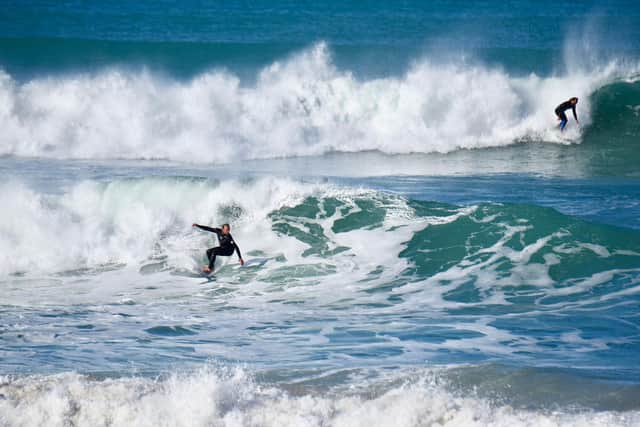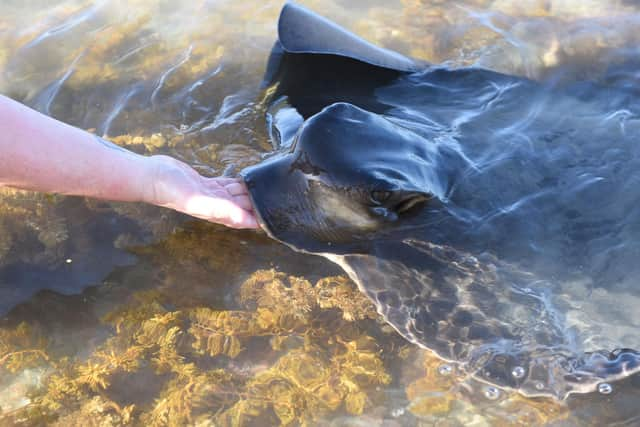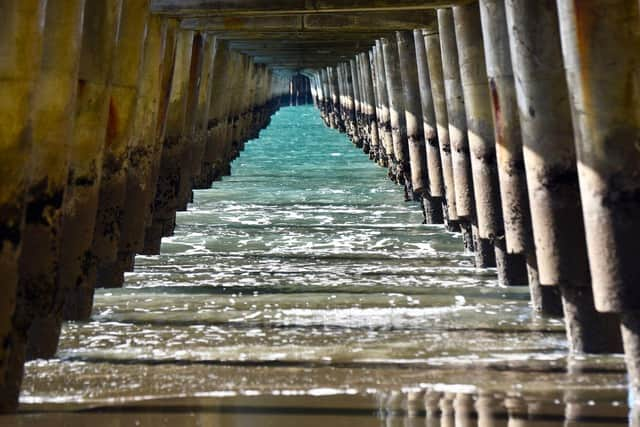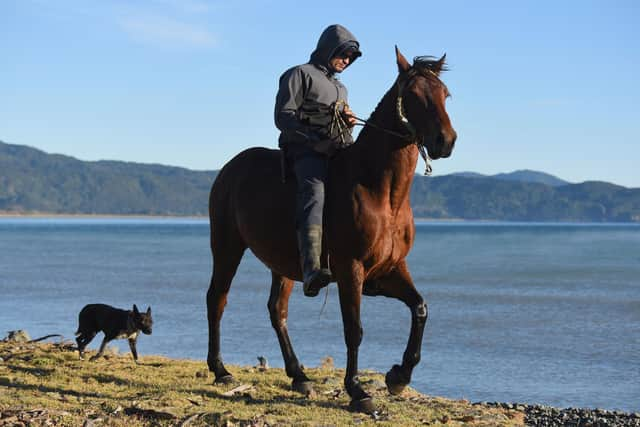Travel: New Zealand’s mesmerising North Island
Not many tourists head for the East Cape; there are no theme parks, big hotels or fancy restaurants. But there are long, empty, driftwood-lined beaches, volcanic islands, vast forests, rolling countryside cloaked in every possible shade of green, and beautifully carved Māori marae (meeting houses) dotted across the landscape.
That’s what led me to explore the East Cape Drive, which took me through some of New Zealand–Aotearoa’s best North Island scenery.
Advertisement
Hide AdAdvertisement
Hide AdIt’s not an especially long route, but multiple hairpin bends and numerous stops add to the time it takes and petrol stations are scarce, so I filled up whenever I could.
With my trusty Mazda packed, I was ready to roll… down and then up the many hills ahead, starting in the town of Gisborne on Poverty Bay, where explorer Captain James Cook made his first historic landing in New Zealand–Aotearoa, aboard HMS Endeavour in 1769.
The Maori are the indigenous Polynesian people of New Zealand-Aotearoa. To learn more about the local indigenous and colonial history, I stopped at Tairāwhiti Museum in Gisborne, Tairāwhiti being the traditional Māori name for the region of Gisborne.
My first night was spent glamping under the stars at the Manutuke Eco Retreat, a 15-minute drive from town, in a luxury safari tent next to a beautiful wetland lake. Interconnecting decks and boardwalks link different elements of the camp and there are paddle boards for a peaceful paddle around the lake. If glamping isn’t your thing, there’s perfectly comfortable motel-style accommodation at Waikanae Beach TOP 10 Holiday Park.
Another 15 minutes further east, I arrived in Tatapouri for a reef ecology walk with marine adventure company Dive Tatapouri, wading at low tide to get up close with sting rays. In fishing waders, my small group trod carefully through knee-deep water and it wasn’t long before three huge rays approached, gliding elegantly through the shallows. As the beautiful, exotic creatures flopped against my legs with their smooth, slippery bodies shining in the sunlight on the water, one insisted on swimming through my legs, almost tipping me off balance.


My next stop was Whangara, a small coastal community first settled by the Ngāti Konohi people, which gained fame in 2003 as the setting for the Māori film Whale Rider. At the heart of the community is Whitireia – an ornately carved meeting house depicting Paikea (an important ancestor of the Māori tribes in Uawa or Tolaga Bay, who settled in Whangara) riding a black whale.
The coastal region here has spectacular vistas with sweeping sandy beaches where international surfers ride the huge, crashing waves. Along the way, I explored secluded little bays and small townships, where I was met by welcoming locals, happy to chat.
In the small town of Uawa I stopped to admire its gargantuan 200-foot-long concrete wharf, completed in 1929. After James Cook, the first European, visited here, the trading post turned into a port and soon a wharf was needed to cope with loading and receiving big ships.
Advertisement
Hide AdAdvertisement
Hide AdI walked under the wharf for a kaleidoscopic view of small waves rolling between the supports then back on the wharf a man on a unicycle wobbled past as he tried to dodge the train tracks laid into it, as fishermen dangled lines from the end of the pier.


Other places to drop into include Anaura Bay, Tokomaru Bay, Te Puia Springs, Waipiro Bay
and Ruatoria, where I stopped to see the wonderful sacred mountain Maunga Hikurangi.
At Tikitiki, I visited one of the finest Māori churches in the country. Built in 1924, it was consecrated in 1926 as a memorial to the soldiers of Ngāti Porou region who died in World War I. Inside the palin European exterior are spectacular Māori carvings and decoration.
From there, the highway crosses the meandering Awatere River before reaching the small community of Te Araroa, made famous by its 600-year-old Pōhutukawa tree named Te Waha o Rerekohu, the oldest and largest in New Zealand–Aotearoa, sitting in the grounds of the local school.


I stood on the shore watching the moody morning mist rising from the sea as a bareback rider wearing sunglasses appeared on a large, unshod bay horse, a small mongrel trotting behind. It’s common to see people using real horsepower for transport throughout the East Cape and children riding horses instead of bikes.
The practice of traditional Tā Moko, culturally identifying lines seen on the faces of many Māori men and women throughout the East Cape is a sacred and skilfully applied art form, thousands of years old. It’s one of the only cultures to use full facial tattooing, and can be seen in Māori carvings, especially at the meeting houses throughout New Zealand–Aotearoa.
Te Kanawa (aka TK) is a 26-year-old tattoo artist from East Cape, although these days he also works in Auckland at one of the city’s top tattoo studios.
Advertisement
Hide AdAdvertisement
Hide Ad“Traditionally, woman have Tā Moko on their chin, lips and nostrils, while men may have their whole face mapped out with their life story, as well as their bodies. A certain line or symbol will identify your status within your family, or your work, knowledge, ancestry, while other lines might indicate how many children you have,” he explained.
From Te Araroa, I detoured along the mostly unsealed East Cape Road that winds its way to New Zealand–Aotearoa’s easternmost point, the first place in the world to see each new day’s sunrise.
The rolling route passes a handful of remote homes and fields full of sheep and cows. Driving along cliff edges with sections under repair and nothing between the land’s edge and my car wheels, the sea rumbled far below.


At my destination, the world’s most easterly lighthouse, I set off up the spiralling 800-step climb to a 360-degree view of this beautiful place. Feral horses grazed below and the Pacific Ocean rolled off into the distance.
A few minutes from Te Araroa is Hicks Bay Motel Lodge, one of the only places to stay in the area. Quiet and comfortable, the self-catering cabins offer a peaceful night and there’s a restaurant.
Next morning, I zig-zagged towards the small community of Hicks Bay then across the border between Gisborne and the Bay of Plenty, joining the coast again at Cape Runaway and on to Raukōkore in Waihau Bay, where the movie Boy was filmed, and where you might see horses wandering along the beach.
With the route getting busier, the closer I got to Whakatāne where my road trip ended, I stopped at Mataatua: The House That Came Home – a beautiful carved Māori meeting house built in the 1870s by the Ngāti Awa people. Deconstructed over 130 years ago, it was shipped around the world as the centrepiece of expositions in Sydney, Melbourne and London before being returned, and visitors can experience its cultural importance and artistic excellence, as well as a traditional hāngi (Māori feast).
Whakaari (White Island) is New Zealand–Aotearoa’s only active, geothermal, marine volcano. When it’s behaving, this regularly erupting volcanic island is a great place to explore by boat or by helicopter excursion.
Advertisement
Hide AdAdvertisement
Hide AdI had wanted to experience Māori culture and found it in bucketloads. What you see is what you get in this region and, for me, that meant great Māori pride, authenticity, history, beauty, friendliness and a natural and slower lifestyle, keeping pace with the rhythms of land and sea.
Fact Box:
Tourism New Zealand: tourismnewzealand.com
Air New Zealand: airnewzealand.co.uk
Mazda UK: mazda.co.uk
Dive Tatapouri: divetatapouri.com
Manutuke Eco Retreat: canopycamping.co.nz
Hicks Bay Motel & Lodge: hicksbaymotel.co.nz
White Island Rendezvous: whiteislandrendezvous.co.nz
The Crown Hotel, Napier: thecrownnapier.co.nz
Napier Aquarium: nationalaquarium.co.nz
Top 10 Holiday Park: top10.co.nz
Sacred site of Maunga Hikurangi: maungahikurangi.com
The House That Came Home: mataatua.com